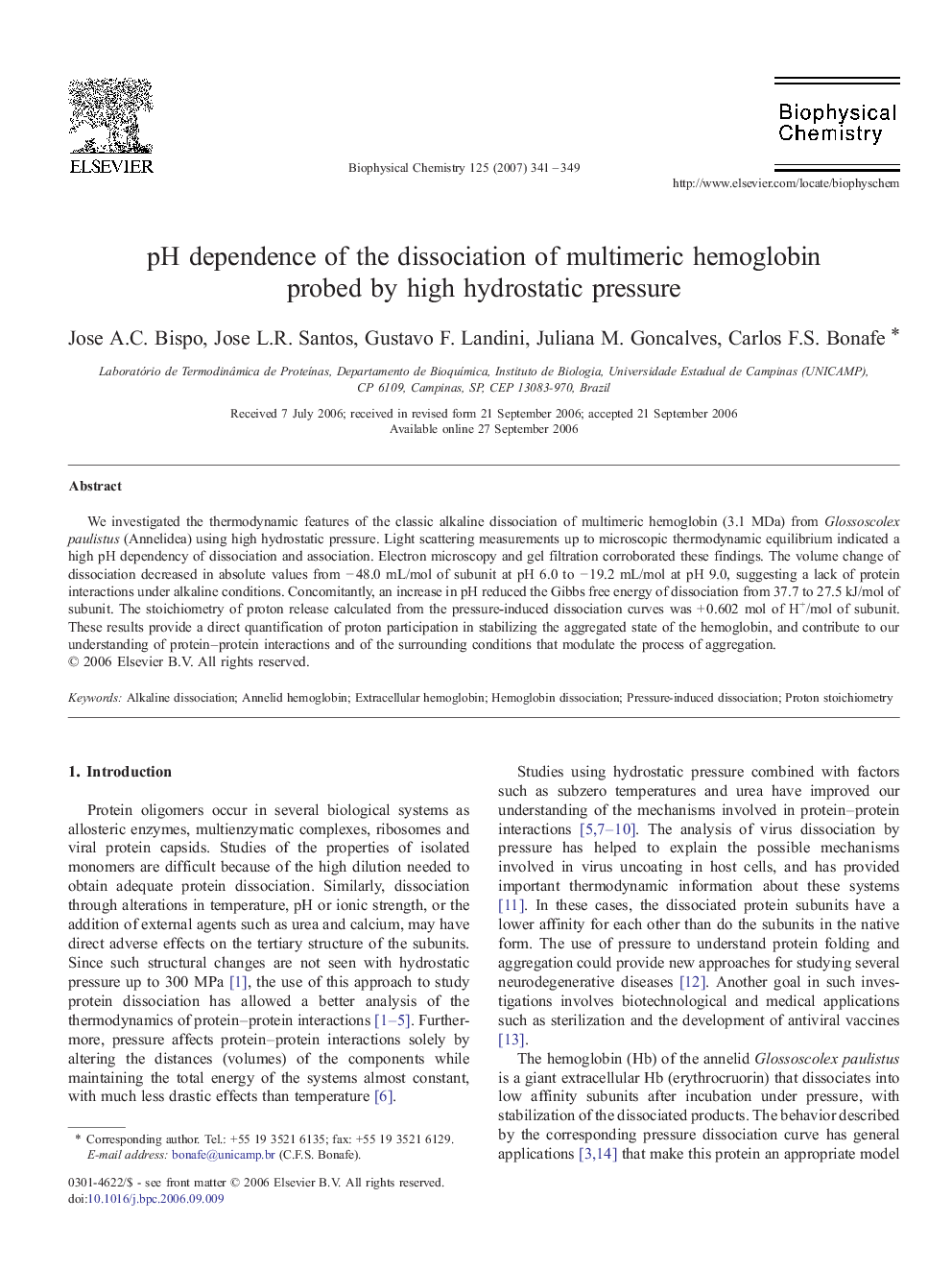| Article ID | Journal | Published Year | Pages | File Type |
|---|---|---|---|---|
| 5372287 | Biophysical Chemistry | 2007 | 9 Pages |
We investigated the thermodynamic features of the classic alkaline dissociation of multimeric hemoglobin (3.1 MDa) from Glossoscolex paulistus (Annelidea) using high hydrostatic pressure. Light scattering measurements up to microscopic thermodynamic equilibrium indicated a high pH dependency of dissociation and association. Electron microscopy and gel filtration corroborated these findings. The volume change of dissociation decreased in absolute values from â 48.0 mL/mol of subunit at pH 6.0 to â 19.2 mL/mol at pH 9.0, suggesting a lack of protein interactions under alkaline conditions. Concomitantly, an increase in pH reduced the Gibbs free energy of dissociation from 37.7 to 27.5 kJ/mol of subunit. The stoichiometry of proton release calculated from the pressure-induced dissociation curves was + 0.602 mol of H+/mol of subunit. These results provide a direct quantification of proton participation in stabilizing the aggregated state of the hemoglobin, and contribute to our understanding of protein-protein interactions and of the surrounding conditions that modulate the process of aggregation.
